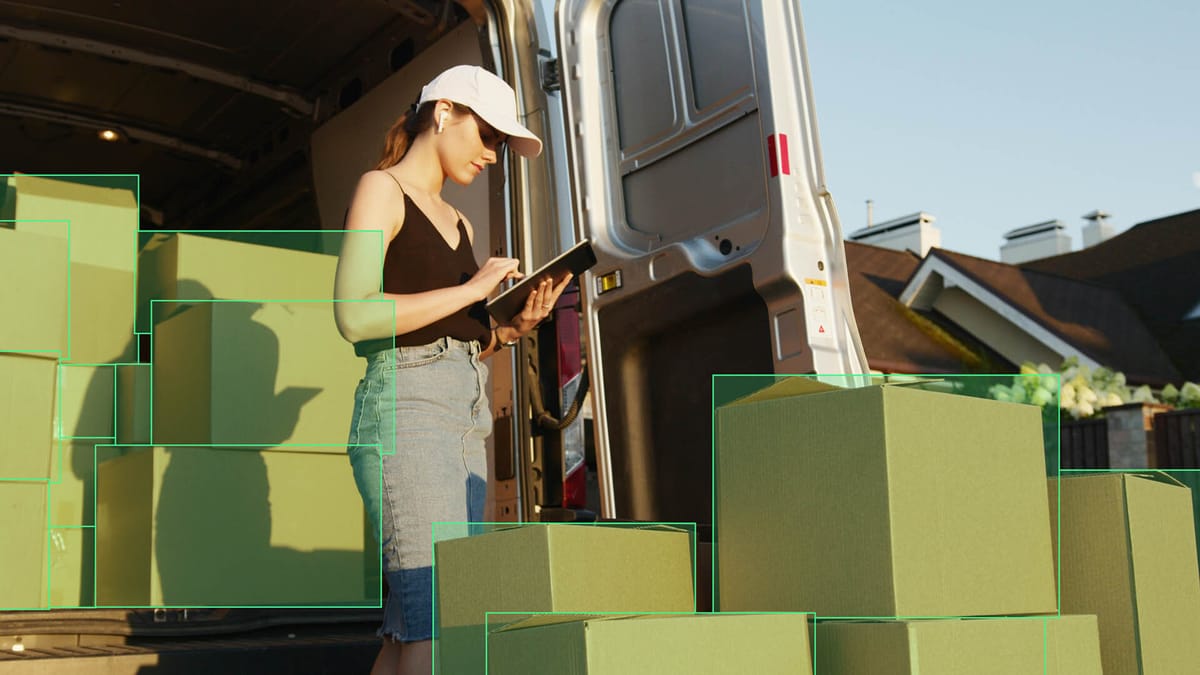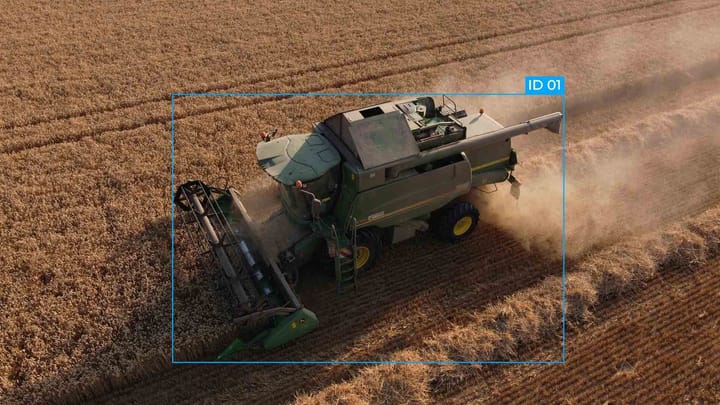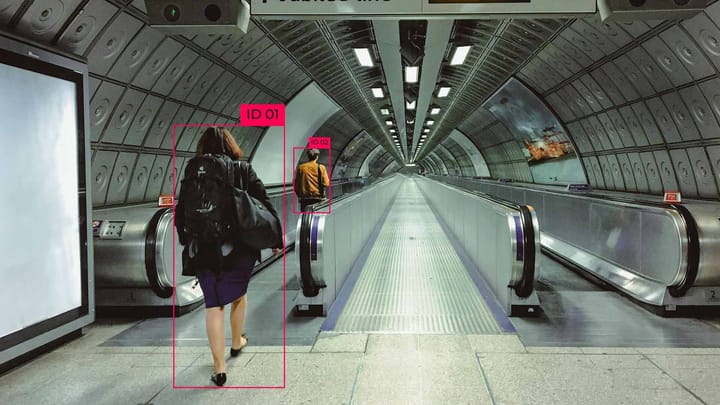Images to Insights: A Hands-on Tutorial for Building a Custom Object Detection Model with Roboflow

The labeling interface on Roboflow can significantly enhance the annotation process, making it up to 10 times more efficient. Roboflow offers a variety of features on the toolbar, including bounding box annotation and smart polygons. These tools are designed to streamline your computer vision model training. They transform simple images into valuable insights, making the process user-friendly and crucial.
In today's fast-paced world, the ability to build computer vision models efficiently is more critical than ever. Roboflow's comprehensive platform allows you to seamlessly label, preprocess, and train your models. Whether it’s identifying objects in manufacturing or automating tasks in real-time, Roboflow provides a complete suite of tools to build custom object detection models with precision.
Key Takeaways
- Roboflow's labeling interface enhances image annotation efficiency.
- Various annotation tools like bounding boxes and smart polygons are available.
- The importance of dataset structuring and annotation accuracy is highlighted.
- Roboflow's platform streamlines the process of building custom object detection models.
- Users can efficiently train accurate vision models for diverse applications.
Introduction to Custom Object Detection
Custom object detection is a pivotal aspect of computer vision, utilizing AI to spot and pinpoint objects in images. It's essential for many fields, especially those heavily reliant on machine learning. With tools like Roboflow, you can craft a bespoke Custom Object Detection Model with Roboflow. This allows for the creation of AI models tailored to specific needs and tasks.
What is Object Detection?
Object detection is the process of analyzing digital images to identify and categorize specific objects. Models such as YOLOv7, MT-YOLOv6, and EfficientDet have demonstrated remarkable performance. YOLOv10 is set to transform the industry further, improving detection accuracy and efficiency. These models empower automated systems to interpret visual data effectively, driving significant advancements in AI model development.
Importance in Machine Learning
The role of object detection in machine learning application is immense. It's crucial for autonomous vehicles to navigate safely and for quality control in manufacturing to be precise. By setting up a Roboflow account, you gain access to tools that help build powerful object detection models. This enhances the capabilities of various technology-driven solutions.
Setting Up Your Roboflow Account
To start your journey with Roboflow computer vision, first, set up a Roboflow account. This process is designed to be quick and easy. Visit the Roboflow integration page to follow the setup instructions.
After creating your account, you gain access to the Roboflow workspace. This platform is perfect for managing visual projects together. It allows various users to work on dataset annotation, enhancing teamwork and productivity. The platform offers plans for individuals and teams, including a Public Plan and a Starter Plan.
Roboflow stands out by offering free labeling for up to 10,000 images. This is great for those beginning with computer vision projects and seeking an affordable way to build their datasets. The Label Assist feature, part of Roboflow, makes predictive annotation easier, speeding up the dataset annotation process and boosting accuracy.
The Roboflow workspace is more than just a data manager; it's a hub for deploying models. It supports YOLOv5, YOLOv8, and YOLOv9 models, offering detailed guides for every project stage. These guides cover gathering, labeling, managing, and exporting data, all available on the Roboflow documentation website.
Moreover, Roboflow accounts give you access to Roboflow Universe, with over 200,000 open-source computer vision datasets. This treasure trove of resources is crucial for building and refining your object detection models. It's a key resource for anyone serious about computer vision, offering a solid foundation to work from.
Roboflow's serverless architecture means your API will scale automatically as your project expands. This ensures you have the infrastructure needed for fast deployment and reliable performance. For real-time applications, this is crucial, where speed and accuracy are essential. By using Roboflow Inference, an open-source computer vision inference server, users can deploy their models efficiently, leveraging the full potential of their custom models.
From setup to ongoing management, Roboflow creates an environment that encourages innovation and efficiency. Its user-friendly interface combined with powerful backend tools makes it an excellent choice for those exploring custom object detection modeling.
Creating Your First Project
After setting up your Roboflow account, the next step is to create your first project. This involves choosing the right plan, inviting collaborators, and selecting your dataset. A well-crafted project setup is crucial for successful collaborative AI model training and will streamline your workflow.
Choosing the Right Plan
First, you need to select an appropriate plan based on your project's scope and privacy requirements. Roboflow offers various tiers, from individual plans to enterprise solutions. Whether you're dealing with a small computer vision dataset or a large-scale project, choosing the right plan ensures you have the necessary resources and support.
Inviting Collaborators
Roboflow makes it easy to create an environment for collaborative AI model training. You can invite team members to your workspace, making teamwork in annotating and managing vision projects seamless. This functionality increases efficiency and brings diverse insights to the annotation process, enhancing your computer vision dataset's quality.
Selecting Your Dataset
The next step is selecting an accurate and representative dataset. For example, if you're creating an object detection model for quality assurance in manufacturing, you might choose a screw dataset. High-quality data directly impacts the model’s performance. Roboflow helps in structuring and importing your dataset efficiently, laying a solid foundation for both training and evaluation. For a detailed guide on training custom object detection models and choosing the best dataset structure, refer to their comprehensive tutorial.
Adding Data to Your Project
Starting with Roboflow for a custom object detection model involves adding data to your project. This begins with uploading datasets, making sure they're in the right format, and checking annotations.
Roboflow accepts various data formats, with the COCO JSON format being popular. A balanced dataset is key for training models effectively. Roboflow's data balance ensures all classes in your dataset are equally represented, preventing bias towards common classes.
- Upload your datasets, ensuring they meet Roboflow's format requirements.
- Check your annotations for errors and correct them.
- Make sure all object classes in the dataset are represented equally.
An initial dataset might have 364 images with 4888 labels for identifying different cell types. Proper structuring of this data enhances the model's performance and accuracy.
| Dataset Category | Number of Images | Number of Labels |
|---|---|---|
| Red Blood Cells | 120 | 1500 |
| White Blood Cells | 120 | 1500 |
| Platelets | 124 | 1888 |
Roboflow's tools simplify data validation, pointing out any inconsistencies. This makes preparing your data easier. A well-structured dataset is essential for successful model training and deployment. Understanding how to structure your vision dataset can greatly improve your project’s results.
With Roboflow Organize, you can reduce the code needed for cleaning and augmenting images by half. This step is vital as it prepares your datasets for model training, making them robust and representative.
Understanding AI-powered Image Annotation Techniques
Image annotation is crucial for training AI-powered computer vision models. By using AI-powered image annotation techniques, users can boost the accuracy and efficiency of their machine learning models. These techniques are vital for tasks such as object detection, segmentation, and classification. Roboflow's platform simplifies the workflow, offering advanced tools for annotating and managing datasets.
Bounding Boxes
Bounding box labels are a key annotation technique in AI-powered image annotation. They mark objects in images with rectangular boxes, crucial for object detection. This method accurately outlines an object's position, like typhoons or weather phenomena. Roboflow Annotate provides an easy-to-use interface for drawing these boxes efficiently.
Polygon Annotations
Polygonal annotations are vital for complex shapes. They allow annotators to outline an object's contours precisely, capturing details that bounding boxes miss. This technique is essential for detecting irregularly shaped objects, such as typhoons in satellite images.
Smart Polygon
The Smart Polygon tool in Roboflow automates annotation by enabling one-click polygonal annotations. This AI-powered tool uses advanced algorithms to automatically identify and outline objects. It's crucial for large datasets, providing quick and efficient workflows with high-quality results.
Label Assist
Label Assist uses existing models to generate annotations for new images, making dataset creation faster. With Roboflow Annotate, it reduces the annotation load by pre-labeling images. Users can fine-tune these labels manually if needed. This combination of automation and manual oversight ensures high-quality datasets and speeds up model training.
Here's a comparative overview of the discussed techniques:
| Annotation Technique | Utility | Key Features |
|---|---|---|
| Bounding Boxes | Object Detection | Efficient for rectangular objects |
| Polygon Annotations | Complex Shape Detection | Precise contour mapping |
| Smart Polygon | Automated Annotation | One-click object identification |
| Label Assist | Pre-Labeling | Reduces manual effort |
Preprocessing and Augmentations
Effective dataset preprocessing and the use of image augmentation techniques are crucial for training a robust model. These steps ensure all images are in a consistent format, enhancing training outcomes. This consistency is key to improving the Roboflow model accuracy.
Auto-Orient
Roboflow’s Auto-Orient feature ensures images are correctly oriented across the Train, Valid, and Test sets. This eliminates rotational inconsistencies, maintaining uniformity. It's a critical step in dataset preprocessing, rectifying any misalignments.
Resizing
Resizing is vital for dataset preprocessing. Roboflow offers a standard downsizing option. This keeps images consistent, crucial for models like Scaled YOLOv4 and YOLOv5. Images are resized to 416x416 and 640x640 pixels, respectively. Standardizing image scales improves the Roboflow model accuracy.
Augmentations
Augmentations introduce variability into your dataset through image augmentation techniques. Roboflow provides options like Auto-Adjust Contrast and Grayscale conversion. Licensed accounts also access advanced features such as Isolate Objects and Static Crop.
Isolate Objects transforms each bounding box into individual images, achieving high accuracy. This method has a mAP of 96.2%, precision of 96.3%, and recall of 93.5%.
Roboflow's version control allows experimenting with different augmentations and tracking performance across versions. This is ideal for creating more robust models.
Training Your Model Using Roboflow
Training your model with Roboflow requires careful management of the training environment and the selection of object detection parameters. It's crucial to monitor training performance metrics closely. By adhering to these steps, you can fully leverage Roboflow's capabilities for superior results.
Setting Up Your Training Environment
First, ensure your AI training environment is properly set up. Use Roboflow's tutorial for initial steps, including dependencies and datasets. This is vital to prevent issues later in the training process. A stable setup in Google Colab, for example, greatly enhances model training efficiency.
Choosing Model Parameters
Selecting the right object detection parameters is crucial for your model's success. Adjust learning rate, batch size, and augmentation settings to match your dataset. For instance, in a YOLOv5 project detecting balloons, tuning these parameters ensured balanced detection of blue and red balloons. Proper tuning significantly improves your model's accuracy.
Monitoring Training Performance
It's essential to closely monitor training performance metrics to pinpoint areas for enhancement. In Roboflow's AI training environment, metrics like precision and mAP (Mean Average Precision) are crucial. These metrics were vital in refining object detection accuracy for classes like players and referees in a sports dataset, achieving a peak F1 score of 76% with balanced precision and recall.
By keeping an eye on these metrics, you can make strategic adjustments to ensure your model meets the desired performance standards. Roboflow's real-time monitoring tools provide actionable insights, facilitating the iterative improvement of model training.
Evaluating Model Performance
Evaluating model performance is essential to ensure your object detection model achieves the required accuracy and reliability. Roboflow's model evaluation tool, accessible to all paid subscribers, offers detailed insights for this purpose. It employs mean average precision (mAP), a key metric in object detection, to gauge model effectiveness.
Automatically triggering model evaluation upon training on Roboflow, the process includes generating confusion matrices. These matrices compare actual annotations with predicted outcomes. For instance, in a retail cooler model, the evaluation correctly identified 291 "products" and 26 "empty" spaces. This analysis revealed false positives and negatives, crucial for pinpointing areas for enhancement. By examining misclassifications per image, patterns in model errors become evident, aiding in data-centric model improvement. Adding more diverse and representative data can boost model generalization and performance.
Roboflow's platform enables the simultaneous viewing of ground truth annotations and model predictions, offering a clear visual aid for analysis. The data from model evaluations guides decisions on model readiness for production or the need for further refinement. For instance, high false positive rates in certain classes suggest the benefit of incorporating more diverse data. Tools like CVevals support informed decisions through precise model evaluation metrics.
Evaluating traffic sign detection models is crucial for applications like autonomous vehicle technology. It helps address misclassifications and assess the model's suitability for such critical applications. Continuous iteration based on evaluation results leads to a robust, reliable object detection model. This model can effectively operate in its intended environment.
FAQ
What is object detection?
Object detection is a technique in computer vision that identifies and locates objects in digital visual content. It employs machine learning and deep learning to recognize various objects in images or videos. This makes it a fundamental function in many AI applications.
Why is object detection important in machine learning?
Object detection is crucial in machine learning for its extensive applications. It enables automated systems to perceive their environment and supports quality control in industrial settings. Precise object detection boosts the dependability and efficiency of AI systems in real-world scenarios.
How do I set up a Roboflow account?
To set up a Roboflow account, visit the Roboflow website and complete the sign-up process. You must agree to the terms of service and select a plan, such as the Public Plan or Starter Plan. This account enables you to initiate projects, invite collaborators, and manage datasets.
What should I consider when choosing a project plan on Roboflow?
When choosing a project plan on Roboflow, consider your project's scope and privacy requirements. The platform offers various plans tailored to different needs and budgets. This allows users to select the plan that best aligns with their project management and collaborative needs.
How can I invite collaborators to my Roboflow project?
You can invite collaborators directly through your Roboflow workspace. This feature facilitates teamwork by allowing multiple users to annotate images and manage project details. It enhances collaboration and efficiency in developing and training custom object detection models.
What considerations are important when selecting a dataset for my project?
Selecting the right dataset is vital for accurate model training. Consider the dataset's relevance to your project, its size, and the variety of object classes it includes. An accurate and representative dataset ensures the model learns effectively, enhancing performance.
How do I add data to my Roboflow project?
Adding data involves uploading your dataset to Roboflow, checking its format, and verifying annotations. Roboflow supports various formats, including COCO JSON, and provides tools to ensure data integrity and balance. These are crucial for optimal training outcomes.
What annotation techniques does Roboflow support?
Roboflow supports several annotation techniques, including bounding boxes, polygon annotations, and its advanced Smart Polygon tool. These tools enable precise labeling of images, which is essential for training high-performing computer vision models.
What is the Smart Polygon tool?
The Smart Polygon tool in Roboflow simplifies creating detailed annotations with a single click. It accelerates the labeling process by using automated techniques to generate precise polygons around objects. This enhances annotation efficiency significantly.
How does Roboflow assist in the preprocessing and augmentation of datasets?
Roboflow's preprocessing tools include auto-orienting images and resizing them for consistency. Augmentation techniques create image variations, helping the model generalize better from the data. These features are critical for improving model accuracy and reliability.
How do I set up my training environment on Roboflow?
Setting up your training environment on Roboflow is straightforward. It involves selecting parameters and configuring the workspace to train your model. The platform provides automated tools that guide you through the process, making it accessible even for those new to computer vision.
What parameters should I choose for training my object detection model?
Choosing the right parameters is crucial for model training. Factors such as learning rate, batch size, and number of epochs must be carefully selected based on your dataset and project goals. Roboflow offers user-friendly tools to help you define and adjust these parameters effectively.
How can I monitor my model's training performance?
Roboflow provides real-time performance monitoring tools to track training progress. These tools offer insights into metrics like loss and accuracy, allowing you to make informed adjustments to improve your model’s performance during training.
What metrics does Roboflow use to evaluate model performance?
Roboflow uses metrics like mean average precision (mAP) to evaluate model performance. This comprehensive metric assesses the model's ability to detect and locate objects within the dataset. It provides a clear indication of overall accuracy and areas needing improvement.



Comments ()